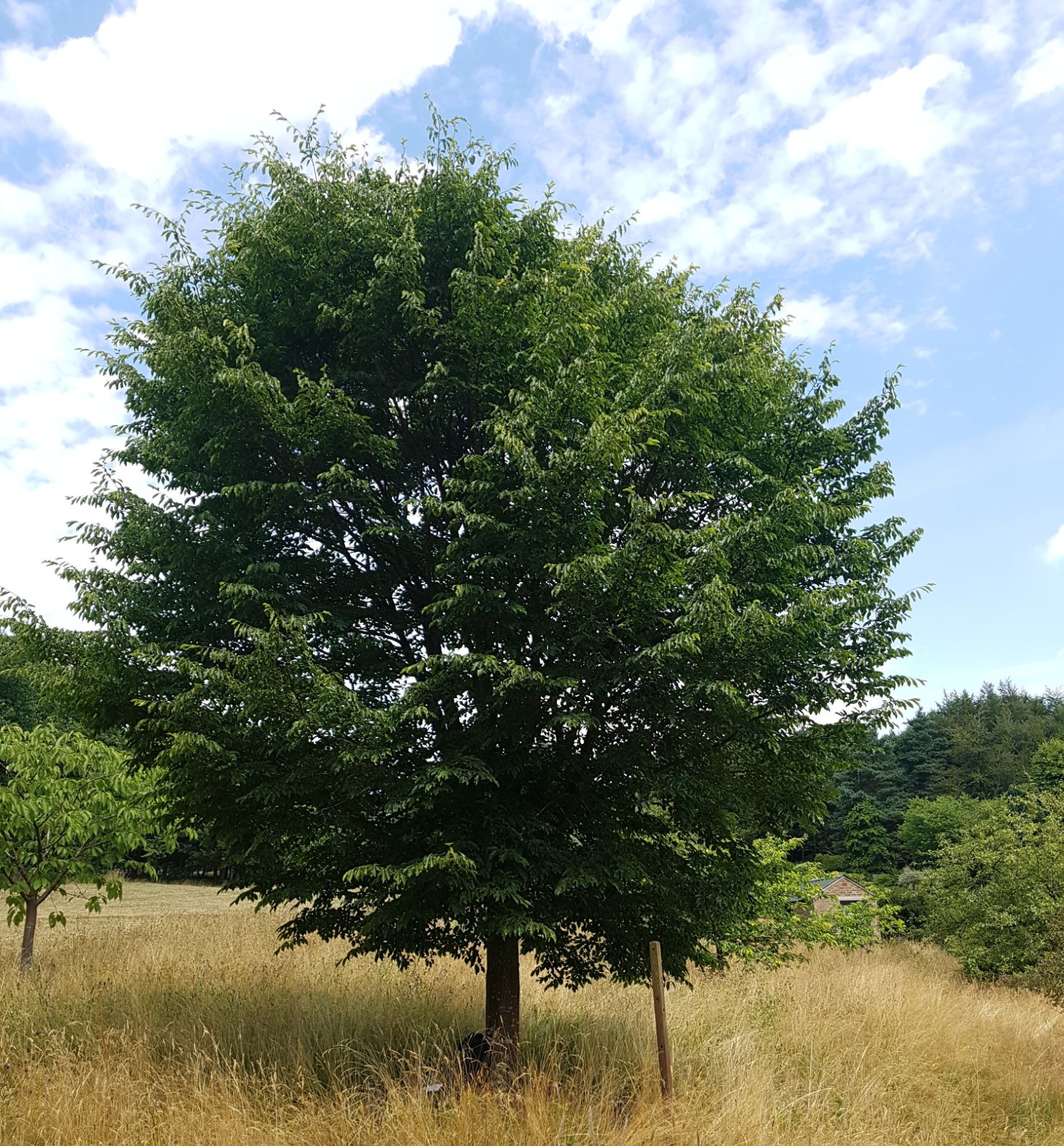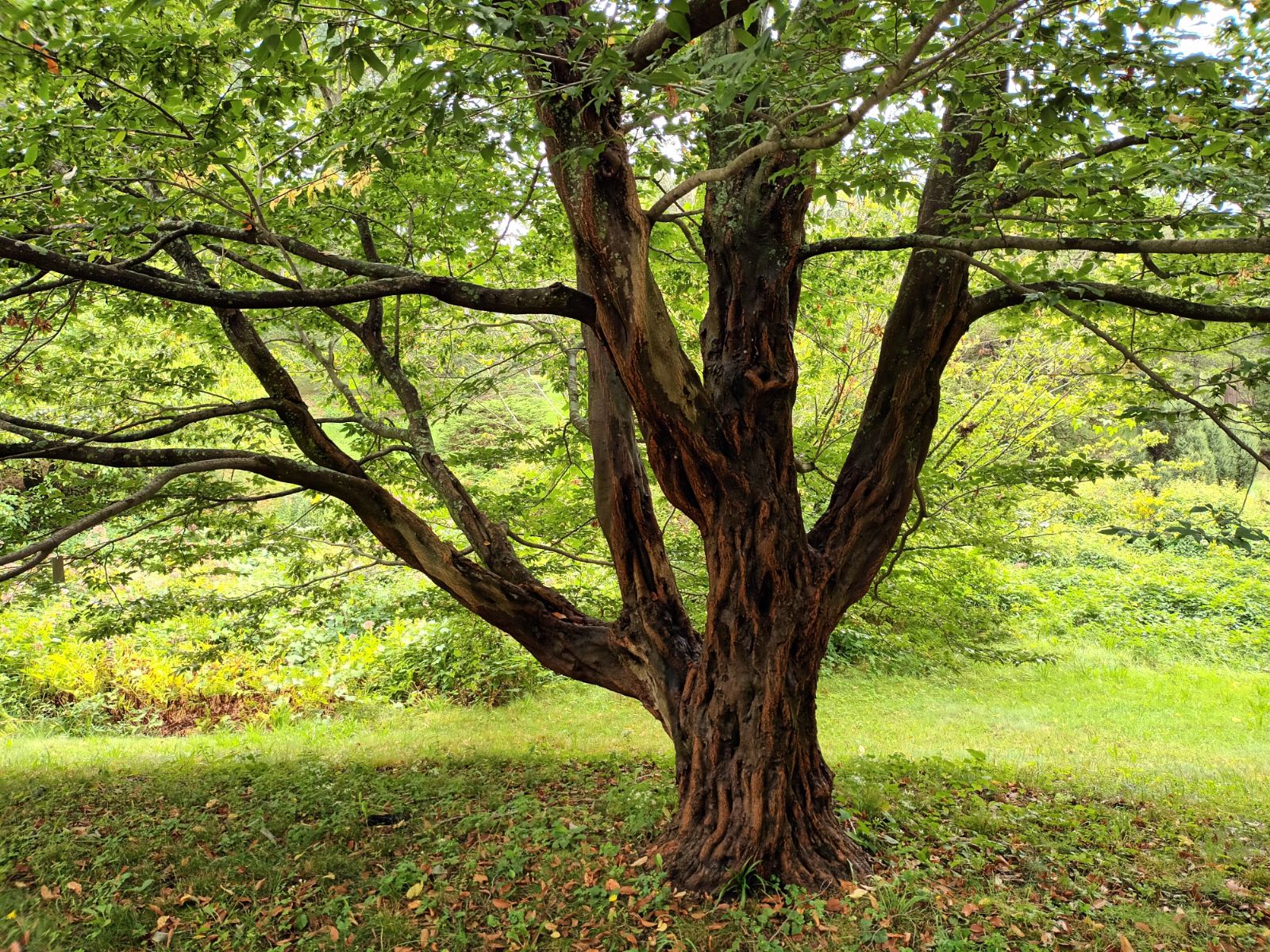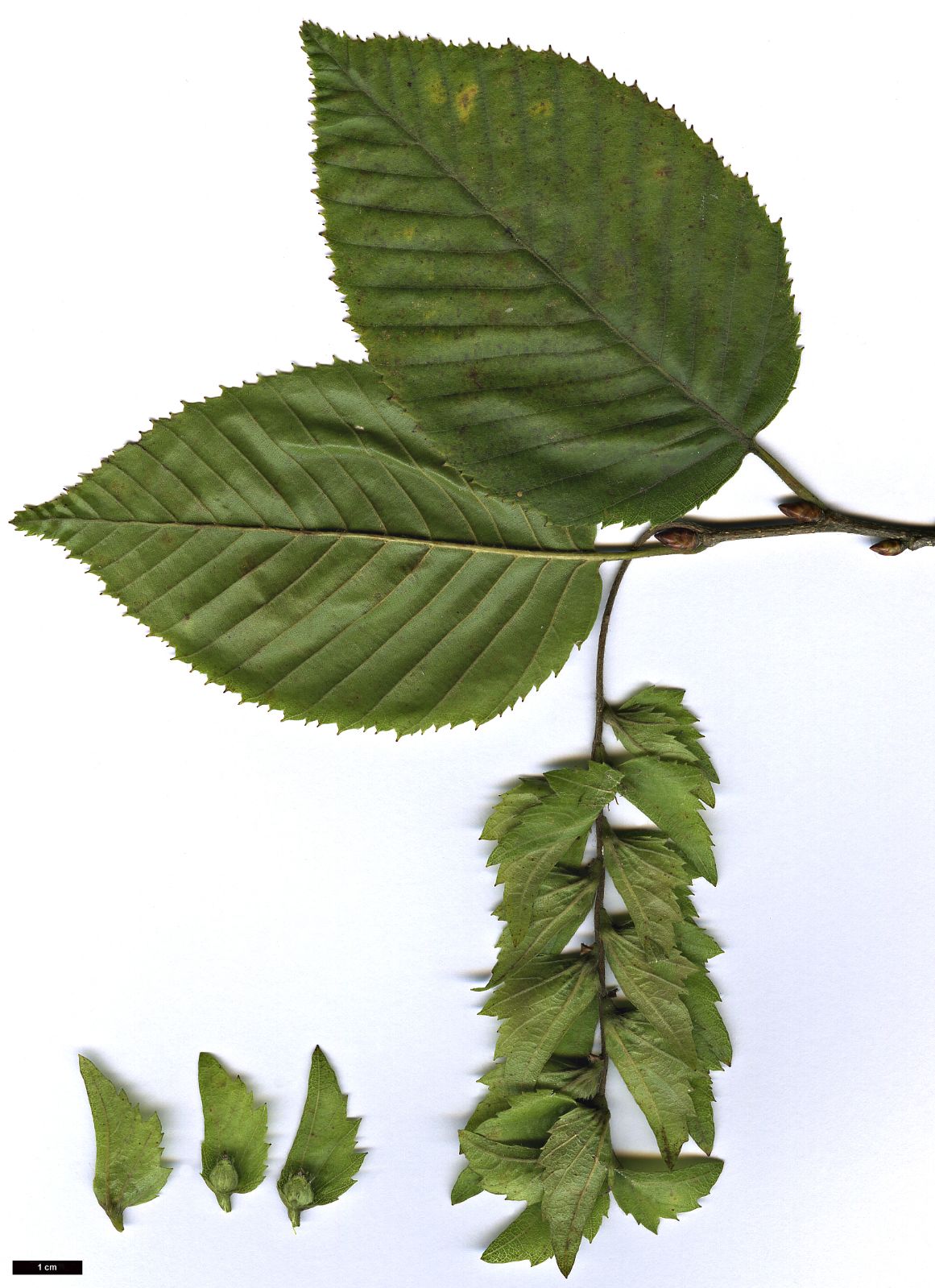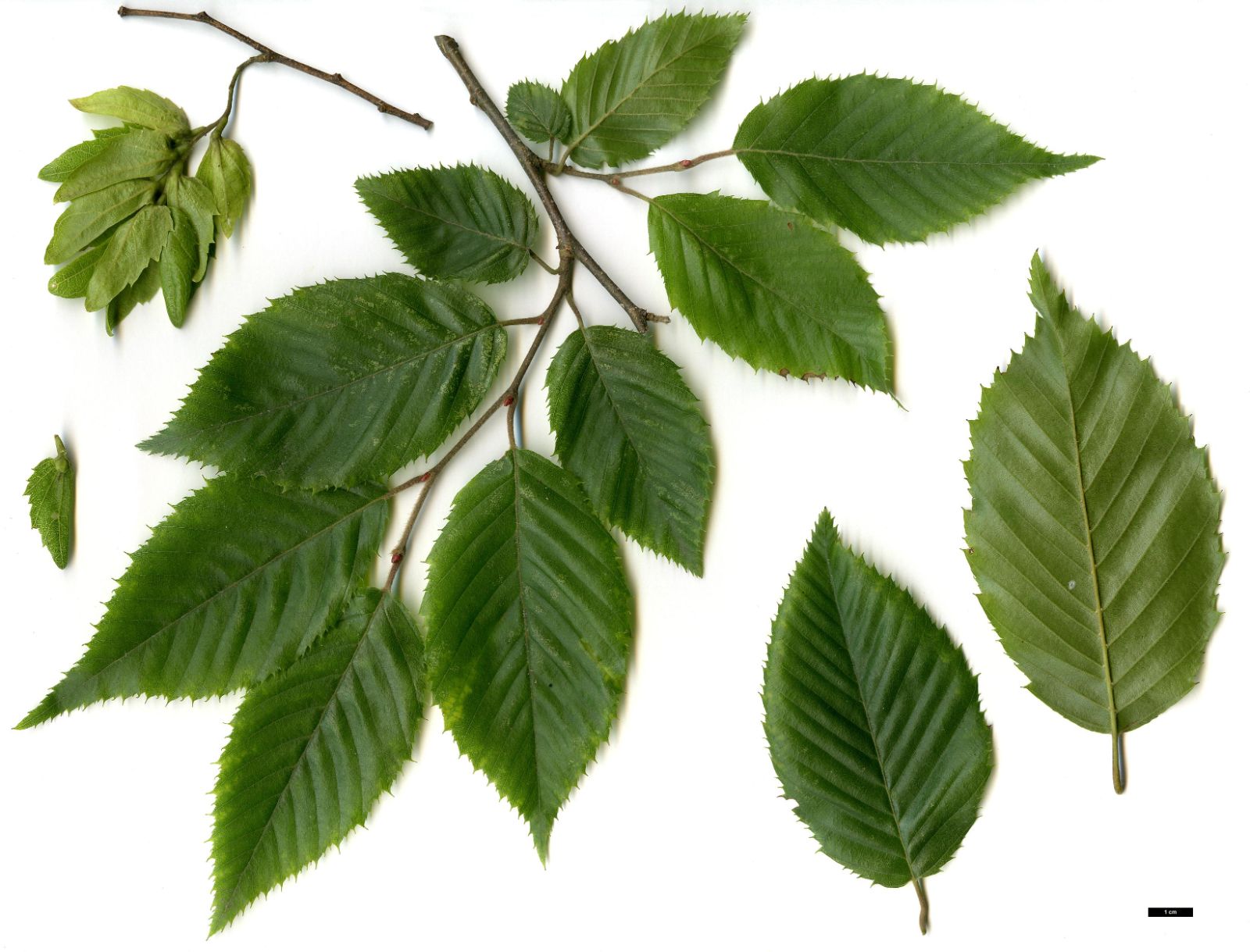Carpinus tschonoskii
Sponsor
Kindly sponsored by
Lord and Lady Aldington
Credits
Owen Johnson (2022)
Recommended citation
Johnson, O. (2022), 'Carpinus tschonoskii' from the website Trees and Shrubs Online (treesandshrubsonline.
Genus
Common Names
- Chonosuke Hornbeam
- Silky Hornbeam
- Yedo Hornbeam
Synonyms
- Carpinus yedoensis Maxim.
- Carpinus falcibracteata Hu
- Carpinus mianningensis Yi
- Carpinus obovatifolia Hu
- Carpinus paohsingensis Hu
- Carpinus tschonoskii var. falcatibracteata (Hu) P. C. Li
- Carpinus coreensis Koidz.
- Carpinus eximia Nakai
- Carpinus fauriei Nakai
- Carpinus tschonoskii var. brevicalycina Nakai
- Carpinus tschonoskii var. eximia (Nakai) Hatus.
Other taxa in genus
- Carpinus betulus
- Carpinus caroliniana
- Carpinus cordata
- Carpinus faginea
- Carpinus fangiana
- Carpinus fargesiana
- Carpinus hebestroma
- Carpinus henryana
- Carpinus japonica
- Carpinus kawakamii
- Carpinus laxiflora
- Carpinus londoniana
- Carpinus mollicoma
- Carpinus monbeigiana
- Carpinus omeiensis
- Carpinus orientalis
- Carpinus polyneura
- Carpinus pubescens
- Carpinus rankanensis
- Carpinus × schuschaensis
- Carpinus shensiensis
- Carpinus tropicalis
- Carpinus turczaninovii
- Carpinus viminea
Tree to 25 m. Bark dark grey, smooth at first but with longitudinal paler markings. Twigs brown, with silky hairs sometimes into their second year. Leaves oblong to elliptic or ovate-lanceolate, 4–12 × 2–5 cm; dark green above with flattened hairs between the veins and on the midrib, hairy under the veins and with axillary tufts; lateral veins in (9–)14–16 parallel pairs; margin unequally or doubly toothed, the teeth with small mucronate tips; petiole slender, pubescent, 8–15 mm. Fruiting catkins 6–10 cm long, reddish at first, with a sparsely hairy 1–4 cm peduncle; bracts (2.5–)3–3.5(–5) cm long, narrowly D-shaped, the curved side remotely dentate and the straight side entire but with a small auricle at the base; veins 4 or 5, sparsely pubescent; nutlet broadly ovoid, hairy only at the tip, prominently ribbed. (Li & Skvortsov 1999; Bean 1976).
Distribution China Anhui, Guangxi, Guizhou, W Henan, Hubei, Hunan, Jiangsu, Jiangxi, Sichuan, Yunnan, Zhejiang Japan Honshu, Shikoku North Korea South Korea
Habitat Forests, to 2400 m asl in the south of the range.
USDA Hardiness Zone 4-5
RHS Hardiness Rating H6
Conservation status Least concern (LC)
Among east Asian hornbeams, this is probably the closest hardy ally to the European Carpinus betulus (Dong et al. 2022), even though the fruit-bracts are unlobed and share an elongated D-shape with many other taxa. The species was described in 1881–2 by the Russian botanist Karl Maximovich, naming it after Chonosuki Sugawa who as a very young man had worked with Maximovich in Japan when the country was first opened to foreigners in 1860 (Rix 2012). Seed from Japan reached the Botanical Garden of the Technische Universität Darmstadt in 1901 (Bean 1976) and seems to have been widely distributed: a specimen planted in 1903 in the Royal Botanic Garden Edinburgh was 15 m × 38 cm dbh in 1981 and one planted at the Royal Botanic Gardens at Kew in 1907 was 14 m × 63 cm dbh in 2001; these have since died, apparently from old age, but another of similar vintage survives in 2022 at the RHS Garden at Wisley and was 15 m with a very short trunk 89 cm thick in 2019 (Tree Register 2022). Another smaller 1904 accession also survives within the hornbeam collection at Kew (Tree Register 2022). In recent decades, the species has been reintroduced to the west in some variety; in 2022 commercially available offerings included BSWJ 10800 (Crûg Farm Plants 2022), BBJMT 297 (Pan-Global Plants 2022), and CMBJP 1898, a high-altitude collection from Honshu whose identity is not yet confirmed (Pépinière des Avettes 2021).
With its relatively large, rather oblong leaves and robust habit, this is a less obviously exotic plant than many east Asian forms of Carpinus – Wharton, Hine & Justice (2005) liken the leaves to those of Betula utilis – but it is clearly tough and well worth growing. The yellow autumn colour is reliable, even (in the case at least of BSWJ 10800) in the Atlantic climate at Caerhays Castle in Cornwall (Williams 2020). Plants from Japan have grown at the Linnaeus Garden of Uppsala University in southern Sweden since 2004 (Royal Botanic Garden Edinburgh 2022), while Randy Stewart reports that in the climate of southern Ottawa in Canada (USDA hardiness zone 4b) it ‘loves hot summers though will likely need additional irrigation during drought’ (Stewart 2010). There are some good examples in gardens in the eastern United States, including the Polly Hill Arboretum on Martha’s Vineyard, the Dawes Arboretum in Ohio (a 1996 collection from South Korea) (Dawes Arboretum 2022) and the Chicago Botanic Garden (Chicago Botanic Garden 2022). The species is also offered in Australia (Lynwood Gardens 2022).
Carpinus tschonoskii, as understood here, has a very wide natural distribution and is consequently quite variable, and populations from several Chinese mountain ranges have been described as separate species, as is the case with so many hornbeam taxa (though it should be noted that the majority of cultivated stock is dervied from Japan). Plants of the World Online (Plants of the World Online 2022) treats one of these entities, C. paohsingensis Hu, as a good species (for which C. falcibracteata Hu and C. obovatifolia Hu become synonyms). Another potentially distinct population is from Korea and was described by Takenoshin Nakai in 1914 as C. eximia; material was introduced under this name to Kew from the Arnold Arboretum in 1925 (Bean 1976) but had gone by the 1980s (Rushforth 1985). Two trees at White House Farm in Kent were received (as C. tschonoskii var. eximia) in 1996 from seed collected at 720 m on Mount Chiri in South Korea (M. Foster pers. comm.); the larger was a thriving 8 m tall in 2019 (Tree Register 2022).










